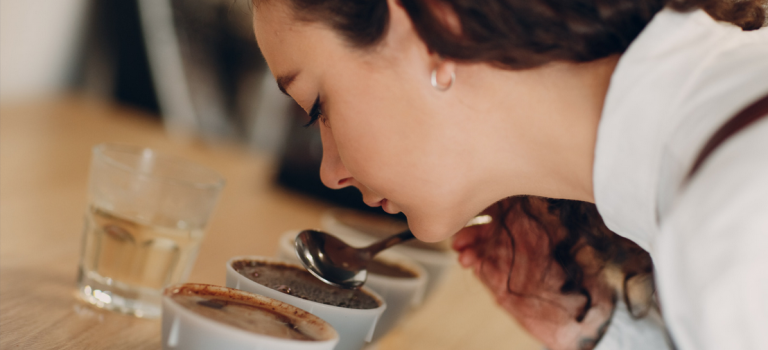As brands contend with increasingly distracted and ever more demanding consumers, success depends on effectively using all the marketing tools at your disposal. Yet, there may be five of them in which you are overlooking: the senses. Or more specifically, how they work together to create a sensory experience that helps you achieve an emotional connection with consumers; which in turn, gives you a competitive advantage. It’s this understanding that has helped propel some of the biggest brands in the world – Apple, Starbucks, Hershey’s, Mercedes Benz, Disney – to greater success. Here’s how sensory research can help your brand, too.
What Exactly is Sensory Research?
In general terms, sensory research applies principles of experimental design and statistical analysis to the human senses (sight, sound, smell, taste and touch) for the purposes of evaluating consumer products and services.
It differs from traditional marketing research in that you’re not asking a consumer for just an opinion, but also testing taste sensations, skin feel, mouth coating and touch, for example. This type of research allows brands to gain insight at a deeper level than what a consumer’s conscious thought may be able to uncover in a traditional research study.
Sensory research can be conducted in a controlled setting where researchers observe participants, as well as in consumers’ homes where they provide feedback.
Reasons to Use Sensory Research
While sensory research is common among brands in food, beverage, personal care, pet care and household care industries, you might be surprised by how applicable (and effective) it can be in solving your brand’s product, packaging and communications challenges as well. Sensory research uses include:
1. Decreasing the cost of goods – Manufacturers are often faced with a need or want to reduce the cost of goods, but at what risk? Sensory research can help you compare your current product versus your potential revisions such as an ingredient or formulation change to determine the effects on the product experience. Will consumers notice the difference? Will they care? Then it can help you identify the steps necessary to reduce the risk so your cost savings aren’t negated by lost sales.
2. Technology in search of a problem to solve – Perhaps you’ve come up with a new ingredient, technology or new manufacturing process, but you don’t necessarily know what to do with it or what to make from it. Sensory research can help you identify what problem it might solve, how it might fit with your brand experience, whether consumers will like it (or not) and how it might work in your category.
3. Trends – How do you capitalize on the latest trend sweeping your category? Sensory research can help you understand how you may be able to make that trend relevant for your brand while still delivering on your brand promise and the experience your consumers have come to expect. As well as to identify what the trade-offs might be in incorporating a particular trend into your product strategy.
4. Segmentation – Most often brands think of segmentation from a traditional quantitative research perspective, but looking at segments in the sensory space adds even greater insight. For example, beyond identifying differences in how your target audience may approach a common task, understanding their wants and expectations from a sensory perspective can help you create experiences that not only solve specific needs, but also resonate on a deeper level.
5. Occasion-based product development – This could be anything from making a product portable to taking a product typically used in the morning and extending it throughout the day to changing a product form to accommodate shifting consumer needs. Here sensory research can help you adjust your product strategy while translating the experience so it still reinforces the brand.
6. Line extensions – In looking at how you extend a brand into multiple places, sensory research can help you take a narrow problem that your brand solves and look at it categorically by exploring sensory attributes to identify new uses or experiences. From there, you can identify product strategy and positioning for those new opportunities that still retains your brand equity.
The Benefit of Sensory Expertise
To bring the kind of clarity that creates competitive advantage from the complex sensory experience, expertise is a must. It’s our passion and it has been for decades. It’s why we work so well together as a team both operationally and in the field. It’s why we collaborate with our sister company, the Institute for Sensory Research, a nationally-recognized expert in analytical sensory. It’s why we’re everywhere clients need us to be through our own facilities as well as via partnerships across the nation and internationally. Ultimately, that expertise is why clients choose Blueberry for sensory research again and again.
To see how sensory research can give your brand a competitive advantage, contact Blueberry today.

